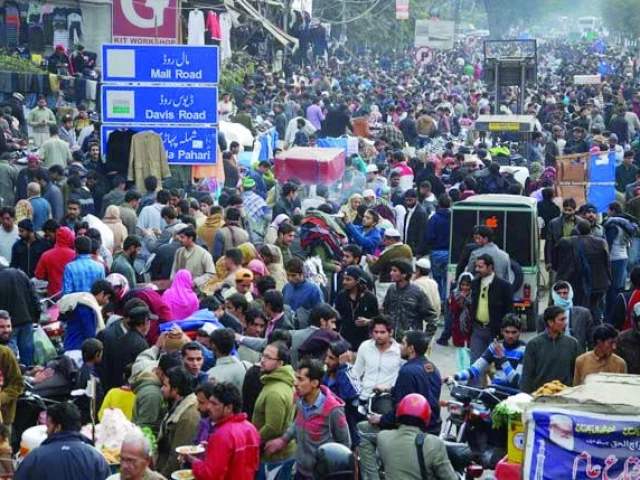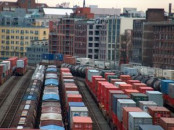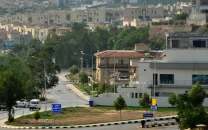An ideal five-year economic policy
Fiscal consolidation must be paired with inclusive growth, structural reforms

Navigating a complex domestic and global landscape, Pakistan stands at a critical juncture. The recently unveiled budget for fiscal year 2025-26, while a step towards fiscal consolidation, underscores the nation's pressing need for a comprehensive and sustained five-year economic policy. Such a policy must not only address immediate crises but also lay the groundwork for long-term, inclusive, and sustainable growth.
This article outlines an ideal economic roadmap for Pakistan for the next five years, predicated on the latest budget, the nation's current economic structure, and the prevailing global political economy.
The 2025-26 budget signals a clear intent to stabilise the economy, largely in alignment with the stringent conditions of a new International Monetary Fund (IMF) programme. Key features include a significant increase in the tax-to-GDP ratio through new levies on salaried individuals, real estate, and retail sectors, a hike in the petroleum development levy, and a substantial allocation for the Public Sector Development Programme (PSDP). While these measures are crucial for fiscal discipline and revenue generation, they must be embedded within a broader, more strategic economic vision for the nation.
The global political and economic landscape presents a myriad of complexities. As a nation heavily reliant on imports for essential commodities and on exports to a few key markets like the European Union and the United States, Pakistan is susceptible to global economic slowdowns and trade protectionism. Geopolitical tensions in the region, including the fragile situation in Afghanistan and the perennially strained relationship with India, create an environment of uncertainty that deters foreign investment.
The strategic partnership with China, embodied by the China-Pakistan Economic Corridor (CPEC), offers significant opportunities for infrastructure development but also brings with it debt obligations and the need for careful management to ensure its benefits are widely distributed.
In this context, an ideal five-year economic policy for Pakistan should be anchored in a bold vision of achieving economic sovereignty through sustainable and inclusive growth. The government's own "Uraan Pakistan" five-year plan, with its focus on the "Five Es" – Exports, E-Pakistan, Equity and Empowerment, Environment, and Energy – provides a solid framework.
The immediate priority must be to continue on the path of fiscal consolidation outlined in the latest budget, but with a greater emphasis on equity and efficiency. Instead of repeatedly squeezing the existing narrow base of taxpayers, the focus must shift to bringing untaxed and undertaxed sectors, such as real estate and agriculture, into the tax net. A progressive taxation system where the wealthy contribute their fair share is essential for social cohesion and sustainable revenue generation.
A comprehensive review of government expenditures is necessary to cut non-essential spending. However, austerity measures should not come at the expense of critical social sectors like health and education.
The State Bank of Pakistan (SBP) must be given full autonomy to function independently to effectively manage inflation and maintain a stable exchange rate. A market-driven exchange rate is crucial for export competitiveness. The perennial drain on the national exchequer from loss-making SOEs must be plugged through a transparent and strategic privatisation process.
Pakistan's long-term prosperity hinges on its ability to transition from an import-dependent to an export-led growth model. A five-year strategy should focus on:
i) Moving beyond the traditional reliance on textiles, Pakistan must actively promote and incentivise exports in sectors with high growth potential, such as information technology, pharmaceuticals, and high-value agricultural products.
ii) Addressing the high cost of doing business by ensuring a reliable and affordable energy supply, improving infrastructure, and streamlining regulatory processes is paramount. CPEC projects should be leveraged to enhance regional connectivity and reduce logistical costs.
iii) Proactively seeking new markets and strengthening trade relationships with existing partners through strategic trade agreements will be crucial.
The global digital economy presents a massive opportunity for Pakistan's youthful and tech-savvy population. A dedicated focus on "E-Pakistan" should involve:
i) Ensuring widespread access to high-speed and affordable internet is the foundation upon which a digital economy is built.
ii) Providing a conducive ecosystem for IT companies and freelancers through tax incentives, skill development programmes, and access to international payment gateways can significantly boost foreign exchange earnings.
iii) Leveraging technology to improve governance, enhance transparency, and reduce corruption will have a far-reaching positive impact on the overall economic environment.
No economic policy can be successful without investing in the country's greatest asset: its people. This requires:
i) A radical overhaul of the education system is needed to produce a workforce equipped with the skills required for the 21st-century economy. A focus on vocational training and technical education is essential.
ii) Increasing female labour force participation is not just a matter of social justice but also a critical economic imperative.
iii) Providing a safe and supportive environment for women in the workplace can unlock immense economic potential.
iv) Increased allocation for the Benazir Income Support Programme (BISP) in the latest budget is a welcome step. These programmes must be further strengthened and expanded to protect the most vulnerable segments of the population from economic shocks.
Pakistan's long-term economic viability is intrinsically linked to its ability to manage its energy and environmental challenges. A forward-looking policy should prioritise:
i) Tackling the circular debt through a combination of tariff rationalisation, improved governance in distribution companies, and a crackdown on electricity theft is non-negotiable.
ii) A strategic shift towards indigenous and renewable energy sources, such as solar, wind, and hydropower, will not only reduce the import bill but also contribute to a cleaner environment.
iii) Investing in climate-resilient infrastructure and promoting sustainable agricultural practices are essential to mitigate the economic impact of future climate-related disasters.
The next five years present a window of opportunity for Pakistan to break free from the shackles of its past economic struggles. The path is arduous and requires difficult choices and sustained commitment. By embracing a holistic and forward-looking economic policy that balances fiscal discipline with pro-growth reforms, invests in its people, and adapts to the realities of the global political economy, Pakistan can forge a path towards a more prosperous and resilient future.
The journey of a thousand miles begins with a single step, and for Pakistan, that first step must be a resolute commitment to a new economic paradigm.
The writer is an international economist





















COMMENTS
Comments are moderated and generally will be posted if they are on-topic and not abusive.
For more information, please see our Comments FAQ